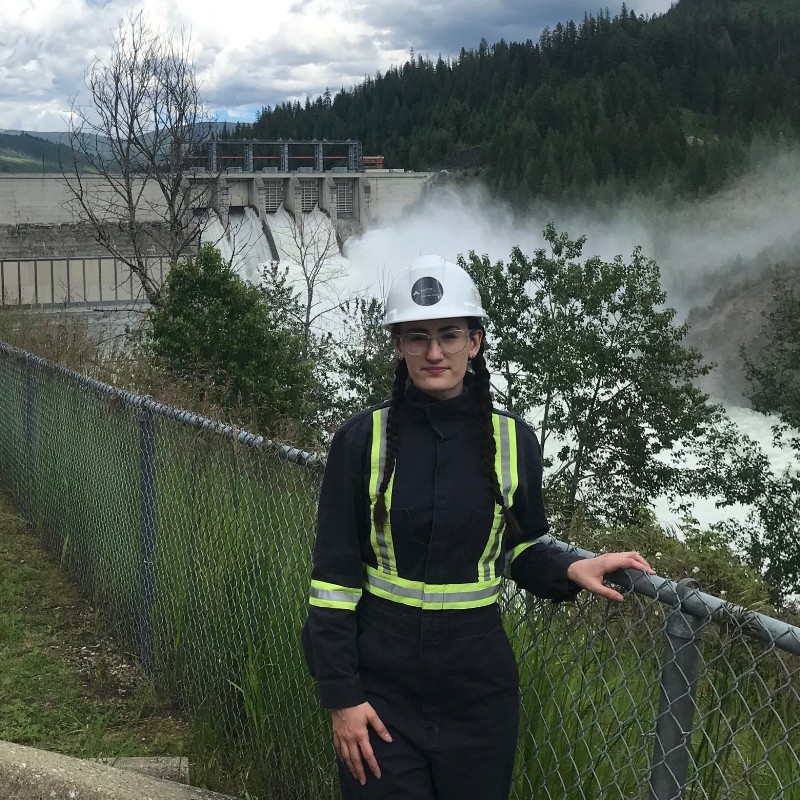Samantha Krieg is a civil engineering undergraduate student at School of Engineering on the Okanagan campus of the University of British Columbia.

What drew you engineering?
In high school and until my early twenties, I always thought that STEM wasn’t for me. I was convinced I was not good at math and struggled to pay attention in science class. Instead, I pursued a career as a cook in fine dining for four years. Even though this was a promising career that I loved, I felt something was missing, so I decided to try something new. After researching countless career paths, everything from interior design to urban planning to food science, I landed on engineering. Looking back, it is surprising that it was not my first choice since I come from a family of many technologists and engineers.
The diverse career paths available to engineering graduates first drew me to engineering. I knew an engineering degree would give me skills and knowledge applicable to various industries and sectors. What made me fall in love with engineering is finding creative solutions to real-world problems to help people and the environment. I am inspired by the countless opportunities available for engineering students to get involved, including undergraduate research, design teams, and co-op placements.
What areas are particularly appealing to you? And why?
I am particularly interested in structural engineering and the building sector. As we continue to feel the impacts of climate change throughout British Columbia, it is becoming evident that we need to build more safe, sustainable, and resilient structures.
This summer, I am working as an undergraduate research assistant with Dr. Lisa Tobber to develop a novel self-centering damper for seismic resilient buildings. In this role, I am learning about the impacts of earthquakes on structures and the opportunities for innovation in structural engineering.

What are the positives and challenges of being a woman in engineering?
While the experience of women in engineering is improving, there are still ongoing challenges with a lack of female representation. Although there is more support for women now, we are still struggling with biases in recruitment and promotion, gender stereotypes, limited networking opportunities, and male-dominated workplace cultures.
The best part of being a woman in engineering is the community and support from other women in STEM. We are beginning to break down these gender stereotypes and biases by supporting each other and being unapologetically proud women in engineering.
Do you have role models that inspire you?
My mother inspires my passion for engineering. She began working as an electrical engineer in the 1980s and faced many obstacles in this male-dominated field. She persevered and progressed into management roles because of her strong work ethic. Her drive inspires me to pursue a career in engineering.
She taught me to think critically, work hard to achieve my goals, and be confident in my skills. The support of my mother inspires me, and I hope to follow in her footsteps to empower women throughout my career.